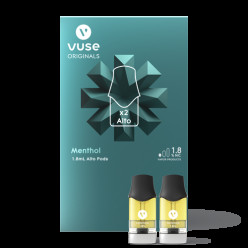
Why Vapes are Classified as Tobacco Products
When vapes were first available, they were marketed as an alternative to cigarettes. They were presented as smoking cessation aids, but the FDA hadn’t approved them as such. They were created to copy the physical and psychological allure of smoking. Such a close resemblance to cigarettes made vapes eventually classed similarly to tobacco products.
The question many people want answered is does vaping count as smoking? That’s a two-fold point; in a regulatory sense that’s true, and in a scientific or user sense, it’s also true. The jury is out exactly on how harmful vaping vs. tobacco use is, even though fewer non-nicotine toxins may be present in most vape products.
Nicotine Connection and Regulatory Framework
Nicotine is responsible for why vapes are classed as tobacco products. Even though synthetic nicotine has emerged in recent years, most nicotine used in vapes still comes from tobacco, connecting the newer e-devices to cigarettes.
Classifying vapes this way was intentional. The FDA extended its regulatory authority to include e-cigarettes and vapes under the Family Smoking Prevention and Tobacco Control Act in 2016. Vapes since then have been treated the same way as traditional tobacco products as far as manufacturing standards, marketing restrictions, and age verification requirements.
Another key connection is the overlap in manufacturing and distribution channels between tobacco and e-cig products. Many major tobacco companies have invested heavily in the e-cig market. They develop their own products or acquire existing vape companies. This has defined the relationship between traditional tobacco and electronic alternatives, some of which don’t contain nicotine and give the user a pleasurable smoking experience.
Public Health Aspects: Vaping vs. Tobacco Use
Like traditional tobacco products, vapes pose health risks and concerns about addiction, particularly among young people. According to studies, the nicotine some vapes contain affects brain development in adolescents and young adults. Since vapes can contain variable amounts of nicotine, and also trace chemicals that can be harmful, more research is needed to say with certainty if they are a good choice as a smoking cessation aid.
Marketing and Sales Restrictions
Their classification as tobacco products subjects vapes to marketing and sales restrictions. These include age verification requirements, advertising limitations, and health warning mandates. The goal is to protect young people who can be easily attracted by the “cool look” of vaping, which has grown into its own subculture.
Industry Innovation and Product Development
While vaping is in regulators’ eyes akin to tobacco use, the vaping landscape is changing all the time. The newest vapes include non-nicotine varieties, with some that feature CBD, vitamins, supplements and other additives. Still, vapes’ tobacco product classification influences how new vape products are developed and brought to market. Even so, while the health and wellness inhalables market has been around for several years, investment and research is growing, and could take off in 2025 and beyond, spawning a new trajectory for vaping.
These new vape devices promise potentially faster absorption and higher effectiveness than taking supplements or vitamins orally. Companies are developing delivery systems that can accurately dose therapeutic compounds while providing customization options via smartphone apps. Some researchers are concerned about these products. They point to the fact that inhalable supplement vapes lack thorough safety testing, and the long-term effects of inhaling heated vitamin compounds remain largely unknown.
What Does the Future Hold?
More research is needed to understand the effects of vapes, and they’ll likely continue for the foreseeable future to be classified as tobacco products. Non-nicotine vapes and new inhalables that contain supplements and other components, plus the research that goes into creating these, will likely continue to be scrutinized, especially if unwarranted health claims are made for these products. What isn’t going away is the push-pull of vaping desire and the culture it has created, versus work from organizations and government to control access and exposure to youth.
New science and discoveries relating to vapes are occurring at a rapid pace. As we await more research, scientists and government regulators will weigh how technology could change nicotine delivery and development of new vape products.
Tell us what you think about vaping and regulations in the comments.
The post Is Vaping Considered Tobacco Use? appeared first on Blog Vape-Ecigs.




